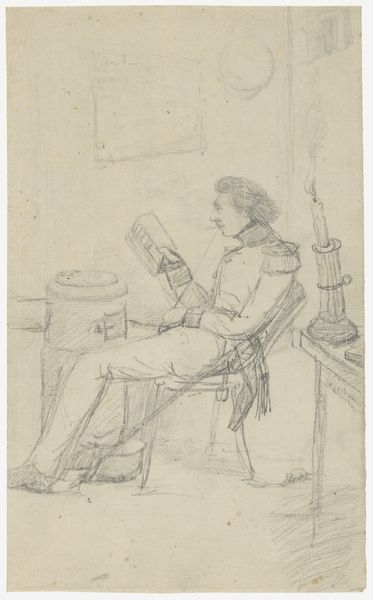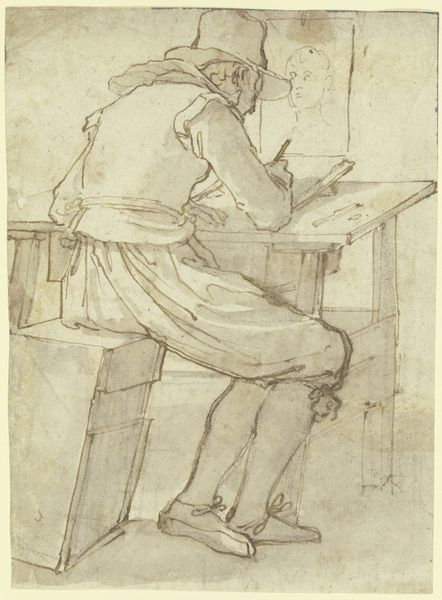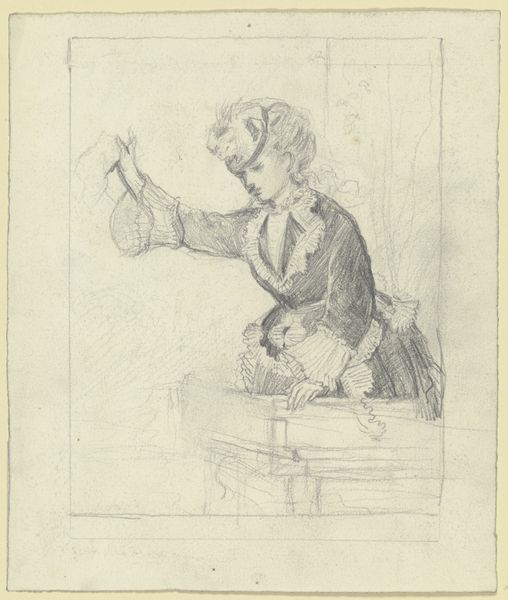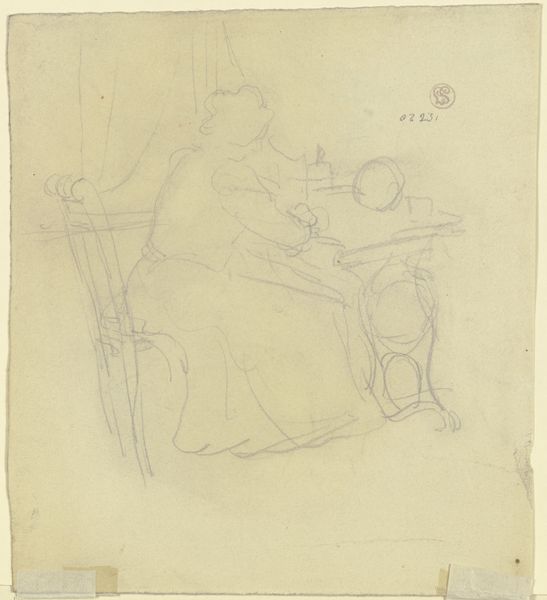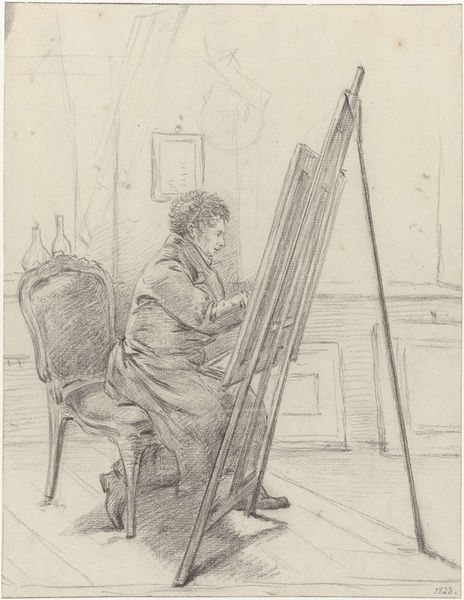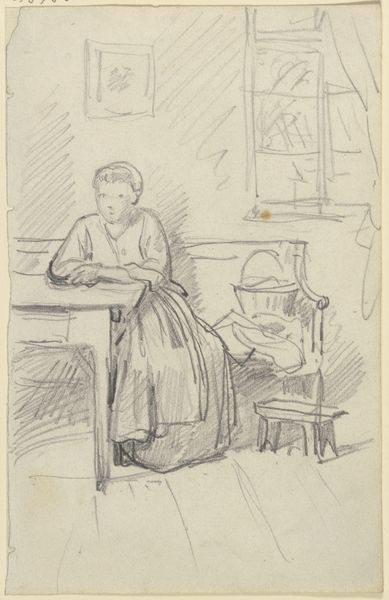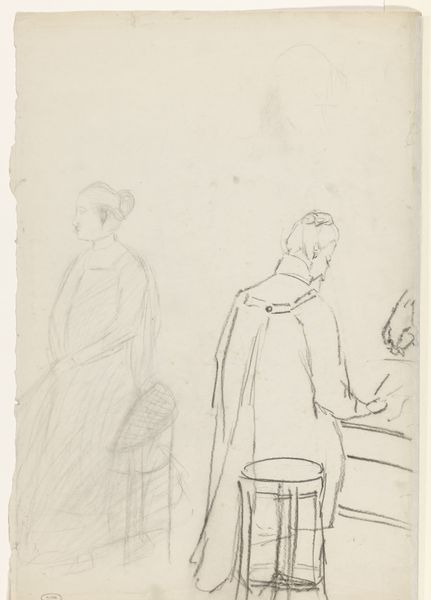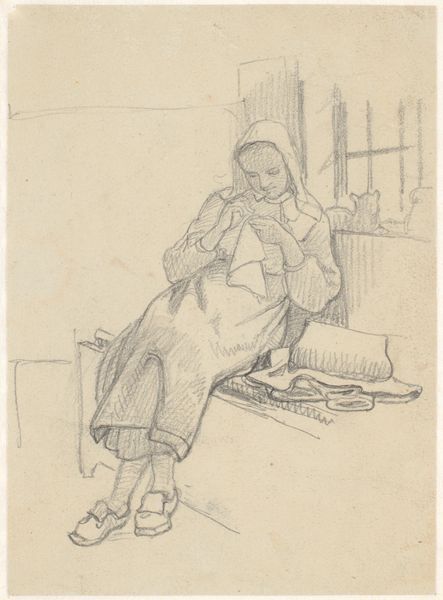
Der Maler Leopold Bode als Rückenfigur sitzend bei der Arbeit c. 1861 - 1864
0:00
0:00
drawing, pencil
#
portrait
#
drawing
#
pencil
#
academic-art
Copyright: Public Domain
Curator: This captivating pencil drawing, believed to be from around 1861 to 1864, depicts the painter Leopold Bode at work. Wilhelm Amandus Beer is the artist. It’s currently held at the Städel Museum. What strikes you most about it? Editor: Initially, there’s a sense of quietude and isolation. He’s captured from the back, absorbed in his art, shut off from us. And the soft gray washes of the pencil give it this hushed, almost contemplative quality. Curator: Yes, and note the texture of the paper, the subtle hatching. Beer’s manipulation of the pencil creates a real sense of depth. You can almost feel the weave of the artist's smock and the roughness of that wooden stool. The materiality is very present. Editor: Absolutely. There's something compelling about the figure on the easel. Figures seem to be floating and reaching. Are we to read it as symbolic, reflecting an aspiration perhaps for a higher realm of creativity, of thought? Curator: Possibly. Or is it purely a reflection of Leopold Bode's own academic studies, the type of art being produced and consumed? It's clearly another artwork within the artwork, a doubling effect showing art making as both labor and a creative process deeply entwined. Editor: But this interplay suggests a link between the act of creation and something more eternal or divine. The figure with arms upraised hints at a seeking, reaching towards the heavens... I wonder what was intended. Curator: Again, is that inherent symbolism or academic art historical language from the time? Beer clearly made a choice about depicting Bode from the rear—the question is what meaning that positioning conveys within the production and reception context of such works at that time? The act of concealing his face transforms him into a symbol of artistic pursuit, perhaps of dedication or even…drudgery. Editor: Maybe a combination of both! There's undeniable artistic commitment visible. This work reminds us how symbols can speak across the centuries, subtly transforming with our evolving cultural landscape. Curator: Indeed, and understanding art-making as production reveals how the artist, subject, and materials converged to make such compelling imagery. Editor: Food for thought.
Comments
No comments
Be the first to comment and join the conversation on the ultimate creative platform.
